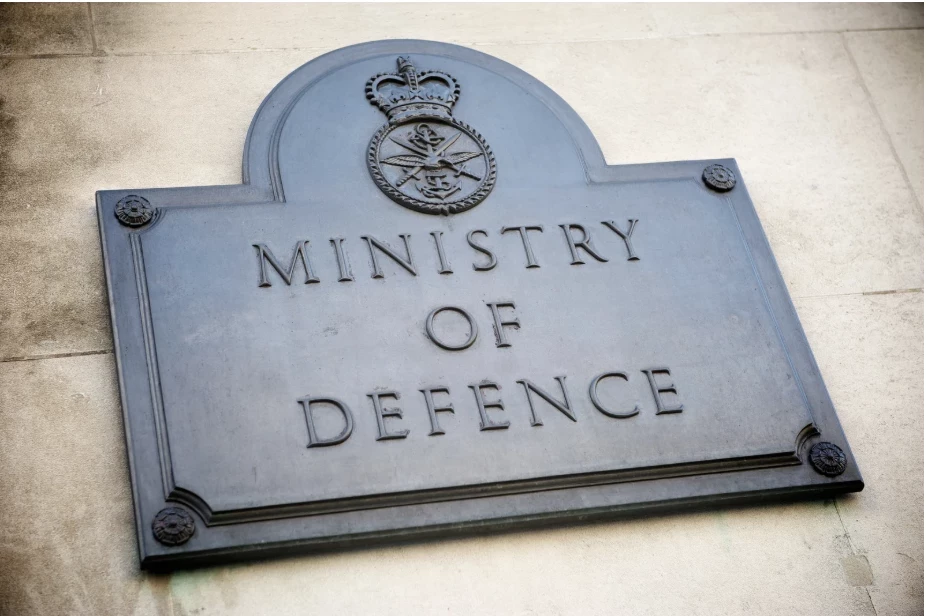10 Disruptive Technologies of the 2010s
Add bookmarkAs we enter a new decade, Defence iQ reflects on some of the technologies that disrupted the defence community in the past ten years, including Cloud Computing, Unmanned Ground Vehicles, and Blockchain.
-
Cloud Computing
In 2010, David S. Linthicum, now Chief Cloud Strategy Officer at Deloitte, urged Department of Defense officials at its annual Enterprise Architecture Conference to adopt cloud-computing technology. Writing after the event took place, David contended:
"No doubt, everyone in DoD IT has heard of cloud computing, but few understand how it could work within their problem domains and support their missions".
“The challenge”, he argued, was to “present yet another new, hype-driven concept and sell it within the context of the existing billions of dollars of IT projects that are under way for the U.S. military”.
Cloud-computing is no longer regarded as ‘hype’ in defence circles today. Years of development work with industry has culminated in a series of major contracts in the U.S., most notably of course the Pentagon’s $10 billion Joint Enterprise Defense Infrastructure (JEDI), which was awarded to Microsoft in October this year.
The ‘cloud’ concept has also informed discourse in military intellectual circles. Lieutenant General David Deptula (Ret), Dean of the Mitchell Institute of Airpower Studies and Co-Chair of Defence iQ’s Multi-Domain C2ISR conference, published a seminal policy paper back in 2018 outlining the ‘Combat Cloud’ concept, which in many ways was an early articulation of the Joint All-Domain paradigm as it stands today.
DARPA’s Mosaic Warfare programme, too, is also another vivid example of this networked, ‘cloud’ system of platform and sensor interoperability and data sharing.
Interested in Disruptive Technologies in Defence? Visit our conference website for more information.
-
Small Satellites and the Rise of Commercial Space
In December 2010, the U.S. Army launched its first nanosatellite satellite, the SMDC-ONE CubeSat. The mission demonstrated the utility of small satellites in low-earth orbit, providing communications capabilities to forces on the ground.
The Army now has three small satellite programmes underway, Gunsmoke, Lonestar and Polaris, designed to “deliver, down to the tactical level, space effects”, said Lt. Gen. James Dickinson, nominee for Deputy Commander of the new U.S. Space Command, earlier this year.
Other NATO allies are also pursuing small satellite technologies. French Minister of Defence Florence Parly announced this year their plans to develop nano-satellite patrollers by 2023 – “formidable little detectors that will be the eyes of our most valuable satellites”.
Italy, too, has established a joint framework for cooperation between the Air Force and national industry to support the development of innovative small satellite air launch technologies, and the UK and U.S. are working together under Team ARTEMIS to develop and launch a constellation of small, low orbit satellites to strengthen defence in space.
The small satellite revolution has been but example of the growing influence of the private sector in driving innovation, and the defence community are now embracing more agile industrial engagement strategies to ensure that they keep pace with new technologies emerging from non-traditional defence companies, SMEs and start-ups.
-
AI and the OODA Loop
In 2017, President Putin stated that the nation that becomes the leader in AI “will be the ruler of the world”. And certainly the 2010s have been dominated by a new arms race in artificial intelligence.
Whilst AI is already transforming defence platform design and manufacturing, military logistics, and cybersecurity, it is in the decision-making domain where disruption has been most significant.
Recognising the cognitive and technological complexity of operating in a digitized, joint all-domain battlespace, the defence community is fully embracing artificial intelligence as it seeks to accelerate decision-making cycles through more rapid processing, exploitation and dissemination of data across platforms and across domains.
Initiatives such as Programme NELSON, forming part of the Royal Navy’s digitization plan, and Skyborg, established by the U.S. Air Force’s acquisition lead Will Roper, are driven by a desire to innovate and transform military operations and processes and, whilst regulatory and ethical frameworks are still ambiguous, AI will very much form the basis for future capability development in defence.
- AI-enabled decision-making will be a core focus of our next Airborne C2ISR conference, taking place in March 2020. Download the agenda here.
-
Deepfakes and Disinformation
“The Chinese are well ahead of us. This is not classified info.” This was the stark warning given by Todd Myers, automation lead for the CIO-Technology Directorate at the National Geospatial-Intelligence Agency in March this year about the use of generative adversarial networks, or GANs, to distort and manipulate pixels and images for nefarious reasons. By doing so, the Chinese are able to trick computers into seeing things that aren’t there, which, from the NGA’s perspective, has worrying implications for their ability to analyse satellite imagery.
Identifying and countering ‘deepfake’ images circulating online has also become a matter of national security and the information domain has become a key battleground. Concerns about growing disinformation campaigns were realised during the 2016 U.S. Presidential Election, and, as we approach 2020, DARPA is now working on developing deepfake detection systems.
-
Unmanned Ground Vehicles
The 2010s were the decade of the driverless car. Google’s was unveiled to the public in 2014, and Tesla’s semi-autonomous truck hit the road in 2017.
As for the military, several variants of unmanned ground vehicles (UGVs) are being developed at a rapid rate as part of a wider move to modernize and digitize land forces.
Russia sent its Ural-9 Unmanned Ground Vehicle to Syria for testing and evaluation in 2017, albeit to negative results, and the U.S is pushing ahead with its Next-Generation Combat Vehicle programme that includes unmanned assets as a core part of its future manoeuvre force.
New technological advances in the 2010s have also allowed industry to creative when it comes to unmanned SWAP (size, weight and power). Nano-drones have emerged as a new tactical enabler, providing ground forces at the lowest levels with surveillance and reconnaissance capability.
The British and French Armed Forces both awarded company FLIR with contracts for the Black Hornet, the world’s smallest combat-proven UAS, tihs year, and the U.S. will be trialling them in Afghanistan.
- Defence iQ’s UGV forum will be hosted in London in January 2020 as part of its International Armoured Vehicles conference. Download the agenda here.
-
Augmented/Virtual Reality
Augmented and Virtual Reality technology found its way into the mainstream in the 2010s, via cheaper VR headsets and apps like Pokémon Go.
The emergence of the multi-domain operational concept and the pivot toward preparing for peer and near-peer high intensity conflict has forced the defence community to adapt their training processes, and VR, AR and MR (mixed reality) technologies will enable them to build more complex battlefield scenarios and prepare soldiers for the physical and cognitive demands of multi-domain operations.
The U.S. Synthetic Training Environment programme and the British Army’s Collective Training Transformation Programme are but two examples of BR/AR/MR-infused training modernization initiatives underway now.
-
Blockchain
‘Blockchain’ was first conceptualized by the anonymous ‘Satoshi Nakamoto’ in 2008. Just a few years later, developers started to build new blockchains, such as Ethereum, which are revolutionising processes in the public and private sectors. The benefits of blockchain to the defence community are many and significant. It can enhance supply chain processes and strengthen cyber security across the military services – a true game changer.
Nevertheless, no such system has been adopted yet. As former UK MOD CIO Mike Stone argues, “I like to think blockchain is a solution looking for a requirement. And we are still absolutely not certain what are the requirements.”
- Blockchain in Defence: What are the Applications?
- Defining a Cybersecurity Strategy for the Defence Industrial Base
-
Counter-UAS
Unsurprisingly, unmanned and autonomous technology escaped the confines of military labs in the 2010s and became a new item on families’ Christmas lists. But the proliferation of commercial drones has become a critical threat to national security and to the safety of military forces, and this has seeded a new industry of counter-UAS technologies.
When Defence iQ hosted its first Countering Drones event in 2016, there was a lot of scepticism towards the investment required to protect critical national infrastructure what was deemed a potential threat. Now, after a series of international incidents, the appetite for investment has grown dramatically.
This month the UK MOD awarded funding to a series of companies to continue developing varying types of C-UAS systems for proof of concept in 2020, meanwhile Raytheon has now delivered the first of its high-energy lasers to the U.S. Air Force. Millions of pounds have also been spent by airports in recent years, including Gatwick, Heathrow and Dubai International.
- Defence iQ's Counter-UAS conference takes place in April 2020. Visit the website here.
- UK Countering Drones Competition: A Case Study in SME Innovation
-
Directed Energy Weapons
LASERs have been under development by the military for decades, but in the past ten years the rate of technological maturation has accelerated dramatically. Directed Energy Weapons are 'no longer science fiction', as so many commentators describe it.
The U.S. Army has committed to fielding DEWs by FY 2022. The Air Force increased its investment between FY17 to FY19, and they have since successfully tested five prototype systems and is preparing to deploy at least two of them by the end of 2020. The Navy also announced its intentions to field both its highest-power laser weapon and its low-end non-lethal laser dazzler in 2019.
Peer competitors are also investing in new weapons programmes and fielding directed energy weapons to "disrupt, degrade, or damage satellites and their sensors", as described by the Defense Intelligence Agency this year in a Space Threat report.
Russia, the report indicates, is pursuing laser weapons, and delivered a systems to its Aerospace Forces in 2018 which is "likely intented for an ASAT [anti-satellite] mission". Russia is also developing an airborne ASAT DEW to use against space-based missile defence sensors.
The DIA also writes that China will "likely will field a ground-based laser weapon that can counter low-orbit space-based sensors by 2020, and by the mid-to-late 2020s, it may field higher power systems that extend the threat to the structures of non-optical satellites". Perhaps its not an exaggeration to say that the 2020s will be the decade of operational LASERs.
- Defence iQ's annual Directed Energy Weapons conference takes place in October. Visit the event website for more information.
-
Directed Energy Weapons: A Case Study in Acquisition Innovation
-
Hypersonic Missiles
Both Russia and China have announced successful tests of their respective hypersonic missiles, and both have claimed that they will achieve initial operating capability by 2020. The U.S. has also invested billions this decade in a series of testing and evaluation programmes, with a goal of fielding hypersonic weapons for the Army by 2023, and the UK and France are working on a joint project with suggestions that a system might be ready by 2030.
The ‘Hypersonics Arms Race’ has been a popular subject in the mainstream media, becoming both a symbol of dystopian, future warfare at light speed, and a hark back to the Cold War era of races and existential threats underpinned by ‘MAD’ diplomacy. Indeed, David Larter, a U.S. defence journalist, was right to remind us all that “none of this stuff works yet… All of what we’re talking about here are prototypes.”



























